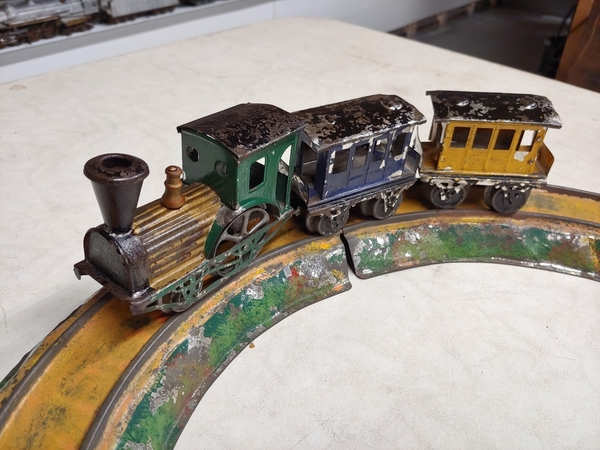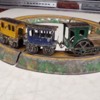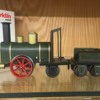Some text on gauge from my e -book on the subject:
In toy and model trains the gauge is the distance between the 2 rails forming the track, however in early days of toy trains the track gauge was measured from between the middle of the 2 rails. Since at that time the (tinplate) rail profile was 3 mm wide the track gauge was 3 mm more than now; for instance, a track gauge of 45 mm now was called 48 mm then. Many of the track gauges for toy and model trains are an industry standard and are indicated by a letter or number, the most common currently are: Z (6.5 mm), N (9 mm), H0/00 (16.5 mm), S (22.5 mm), 0 (32 mm) and 1 (45 mm). Märklin started this standardization in 1891 introducing a complete gauge I railway system with track, rolling stock and accessories. Gauge I, which had a width of 48 mm, i.e. 45 mm between the rails, is still used and now in general called gauge 1. Larger gauges where standardised indicated by Roman numerals II (54 mm), III (75 mm) in 1892. In 1898 Märklin introduced a smaller gauge of 35 mm (32 mm between the rails) which was called gauge 0. Other toy train makers like Bing and Carette followed and later almost all manufacturers around the world followed this industry standard.
Most train sets were bought as a present for a child. Until a couple of years ago I assumed that train sets where made by the toy or model train manufacturers to initiate the child to a hobby, such that they would want more, profit generating, items to expand on the set. Recently I came to the conclusion that cheap tinplate clockwork train sets were sold as a toy by itself; the manufacturer just gets profit from making and selling sets. Some manufacturers, like FV. JEP, CR (Rossignol) and Bing, even made train sets using a gauge for which they did not supply extra track or rolling stock to expand the set. Gauges of 30 mm and 25 mm were used, which, as was normal with tinplate trains, were called respectively 33 mm and 28 mm. Below a picture of a 30/33 mm JdeP (JEP) train which is balanced on 0-gauge track, but it will not run on that track.

Regards
Fred










![0720190038[1] 0720190038[1]](https://ogrforum.ogaugerr.com/fileSendAction/fcType/0/fcOid/93502813444094810/primaryPicture/true/filePointer/93502813444094991/fodoid/93502813444115696/imageType/SQUARE_THUMBNAIL/inlineImage/true/frame/FIRST/thumbnail.jpg)














